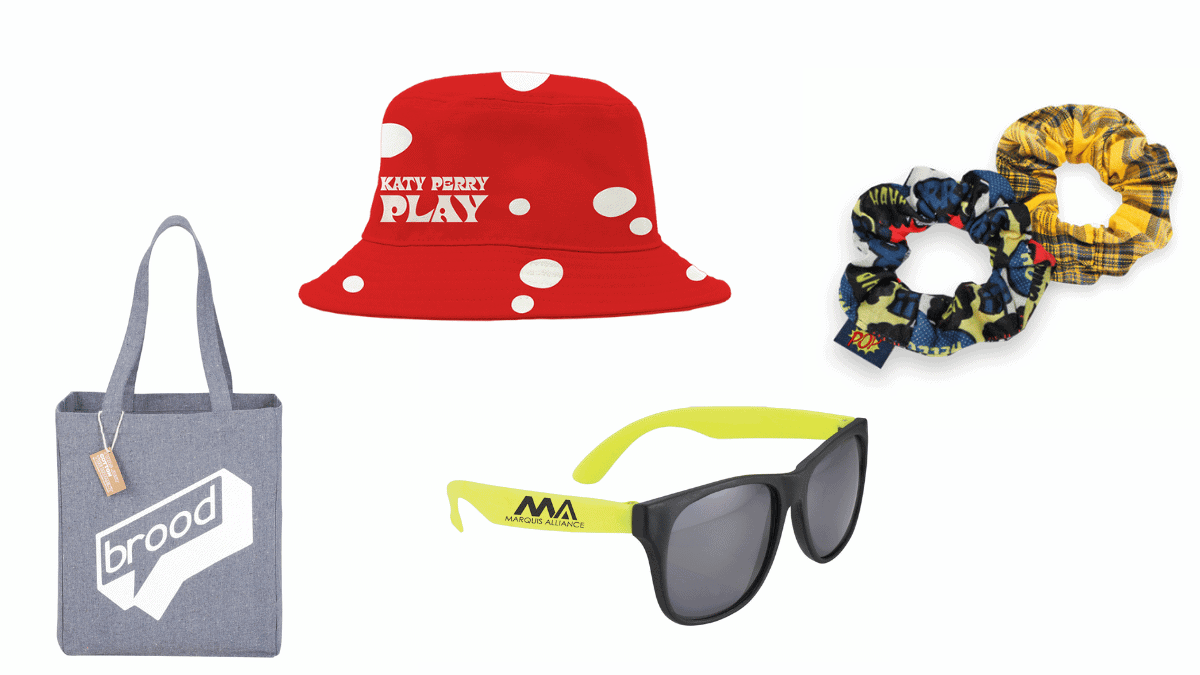Common Fabric Types Used in Branded Clothing and What They Mean
Common Fabric Types Used in Branded Clothing and What They Mean
Blog Article
The Significance of Sustainable Clothing: Just How It Affects the Setting and Your Wardrobe
Lasting garments is increasingly recognized for its critical function in lessening the environmental effect of the quick apparel industry. By concentrating on environmentally friendly materials and moral manufacturing approaches, it addresses pushing eco-friendly problems. This shift not only profits the world but likewise affects consumer choices, resulting in a more thoughtful approach to closet administration. Understanding these characteristics increases vital inquiries regarding fashion's future and individual responsibility fit it.
The Ecological Footprint of Rapid Style

Benefits of Sustainable Materials
Sustainable materials offer significant advantages, particularly via environment-friendly textile selections that decrease ecological damage. These materials likewise demonstrate longevity and long life, lowering the requirement for frequent substitutes. Therefore, they contribute to a more lasting apparel industry and advertise responsible customer actions.
Eco-Friendly Material Options
While the fashion business has long been related to fast trends and environmental injury, the increase of green textile options presents a transformative opportunity. Lasting materials such as natural cotton, hemp, and Tencel have actually obtained appeal due to their reduced environmental influence. These materials are commonly created without harmful chemicals and require much less water, decreasing their carbon impact - Branded Clothing. Furthermore, many eco-friendly fabrics are biodegradable, adding to a round economy by lessening waste. Choosing sustainable products not just sustains environmentally accountable techniques but also promotes much healthier ecosystems. As consumers come to be more aware of their buying power, the need for eco-friendly fabrics motivates brand names to introduce and take on even more sustainable production approaches, eventually benefiting the world and future generations
Sturdiness and Durability Advantages
Several customers are significantly identifying the toughness and long life advantages of sustainable materials in their apparel options. Unlike standard fabrics, lasting materials such as organic cotton, hemp, and recycled polyester are engineered to withstand wear and tear, causing garments that last much longer. This minimized regularity of substitute not only conserves customers cash gradually however also lessens waste produced by fast style. Additionally, lasting apparel often utilizes environmentally friendly production approaches that enhance material strength, adding to a reduction in the total carbon footprint. By buying sturdy clothing, consumers can cultivate a more lasting wardrobe while delighting in top quality pieces that maintain their aesthetic and functionality in time. As a result, resilience and durability stand as key advantages of choosing sustainable materials.
Decreasing Waste Through Sustainable Practices
Decreasing waste in the garment industry can be accomplished via cutting-edge techniques such as upcycling and repurposing materials. Furthermore, taking on minimal closet techniques urges customers to focus on high quality over amount, ultimately decreasing apparel intake. Together, these approaches contribute greatly to a much more sustainable apparel version.
Upcycling and Repurposing Materials
Upcycling and repurposing products have actually become innovative approaches in the garment industry, changing discarded fabrics into valuable new items. This strategy not only lessens waste however also urges creativity and individuality in clothing design. By taking old garments and materials, developers can develop unique items that mirror individual style while lowering the demand for brand-new resources. Furthermore, upcycling often needs less energy and water compared to standard production procedures, greatly reducing the ecological footprint of style. As customers come to be a lot more conscious of sustainability, the appeal of upcycled clothing remains to climb, promoting a circular economy. Ultimately, these techniques add to a much more sustainable future, where fashion focuses on ecological health and wellness over quick manufacturing and consumption.

Minimalist Closet Strategies
As individuals significantly look for to lessen their ecological effect, taking on minimal wardrobe methods has actually gotten traction why not try this out as an efficient approach to sustainable style. These techniques highlight high quality over quantity, motivating consumers to curate a smaller sized collection of functional, long lasting apparel. By focusing on classic items that can be mixed and matched, individuals can minimize the frequency of acquisitions and eventually lower waste.Additionally, minimalism promotes mindful consumption, prompting consumers to assess the environmental and honest implications of their choices. This method not only fosters a more sustainable lifestyle yet additionally streamlines day-to-day decision-making concerning attire. As people embrace minimal principles, they add to a fashion culture that values sustainability and responsible consumerism, inevitably causing a more eco-conscious culture.
The Duty of Ethical Labor in Sustainable Style
While numerous customers are significantly familiar with the environmental effects of their apparel options, the significance of ethical labor practices in lasting fashion can not be neglected. Ethical labor encompasses fair earnings, secure working problems, and respect for workers' rights, forming the foundation of liable fashion production. Brand names that prioritize honest labor not just uplift communities but likewise established a criterion for liability in the industry.Moreover, the assimilation of moral practices cultivates transparency, allowing customers to make educated options concerning their purchases. This practice contrasts sharply with fast fashion's unscrupulous labor models, which frequently prioritize revenue over individuals. By sustaining firms devoted to moral labor, consumers contribute to a system that values human dignity along with environmental sustainability. Moral labor is not just an add-on; it is essential to the wider objective of lasting fashion, ensuring that the mission for eco-friendliness does not come at the expense of human legal rights.
The Impact of Sustainable Clothing on Carbon Emissions
Lasting apparel has the possible to substantially reduce carbon emissions connected with the fashion business. Conventional garment manufacturing contributes significantly to greenhouse gas emissions, mostly as a result of energy-intensive production processes and using non-renewable resources. In comparison, lasting style concentrates on environment-friendly products, such as natural cotton or recycled fibers, which commonly require much less energy to produce.Moreover, sustainable brands have a tendency to embrace a lot more reliable production techniques, decreasing waste and reducing total exhausts. By focusing on longevity and timeless design, lasting garments motivates customers to get less often, more decreasing the carbon footprint connected with overconsumption.Additionally, many sustainable brand names are devoted to openness in their supply chains, allowing customers to make enlightened options that straighten with their values. Inevitably, shifting towards sustainable apparel can cause a significant decrease in carbon discharges, adding to a healthier world and an extra lasting future for the garment industry.
Supporting Neighborhood Economic Climates With Sustainable Selections
The change towards sustainable apparel not just addresses environmental problems however likewise substantially advantages neighborhood economies. By picking sustainable style, customers typically sustain neighborhood artisans and local business, improving community strength. These business commonly operate on a smaller sized range, focusing on more workmanship and ethical practices over mass production.Investing in locally made lasting apparel promotes job creation and stimulates economic growth within areas. As customers end up being extra knowledgeable about the environmental impact of their acquisitions, they increasingly seek out products that show their values. This demand urges neighborhood producers to embrace lasting techniques, adding to a circular economy.Moreover, supporting regional businesses reduces transportation emissions, aligning with eco-conscious customer habits. The interconnectedness of sustainable clothing and neighborhood economic situations highlights the important duty that specific options play in promoting both ecological and financial wellness. By cultivating these neighborhood connections, areas can flourish while likewise working in the direction of a much more sustainable future.
Changing Your Closet: Tips for a Lasting Closet
As people seek to reduce their ecological impact, transforming a wardrobe right into a sustainable closet ends up being a necessary step. One efficient approach is to assess existing apparel, keeping only products that are put on frequently which align with sustainability objectives. Prioritizing quality over quantity is important; purchasing long lasting items from environment-friendly brands can substantially decrease waste.Additionally, incorporating used items can rejuvenate a wardrobe while decreasing environmental damage. Organizing apparel swaps with friends or contributing extra items can even more promote sustainability.When shopping, people should seek materials that are natural, recycled, or eco-friendly, and prevent fast style stores - Branded Clothing. Exercising mindful intake by thoughtfully taking into consideration each purchase can contribute to a much more lasting lifestyle. By applying these tips, one can produce a closet that mirrors personal style while sustaining environmental stewardship
Often Asked Concerns
How Can I Identify Sustainable Clothing Brands?
To determine lasting apparel brand names, one need to investigate products made use of, inspect for qualifications like Fair Trade, and analyze the brand name's transparency concerning their production procedures, labor techniques, and ecological effect, making certain honest and green methods are prioritized.
What Are the Costs Related To Lasting Fashion?
The costs associated with sustainable style can differ significantly. Higher manufacturing expenditures, moral sourcing, and green materials usually result in increased market prices, which may discourage some customers while interesting eco mindful shoppers.
Can Sustainable Apparel Be Fashionable and Stylish?
Lasting garments can without a doubt be trendy and fashionable. Designers increasingly focus on cutting-edge products and honest production methods, verifying that style and sustainability can coexist. Consumers now have varied options that blend aesthetic appeals with environmental consciousness.
How Does Laundering Garments Affect Their Sustainability?
Cleaning clothing greatly influences sustainability by consuming water and energy, contributing to pollution, and creating microplastic release. Constant cleaning can weaken materials, reducing their life expectancy and increasing the requirement for substitutes, eventually aggravating ecological worries.
What Is the Lifespan of Sustainable Apparel Contrasted to Fast Fashion?
The lifespan of sustainable apparel normally surpasses that of rapid style items, usually enduring numerous years as a result of top quality materials and workmanship. In comparison, quick fashion garments may deteriorate swiftly, requiring even more regular substitutes. Lasting clothing is significantly recognized for its important role in decreasing the ecological effect of the fast style market. While many consumers are progressively mindful of the ecological effects of their apparel options, the value of moral labor techniques in lasting style can not be ignored. Branded Clothing. Sustainable garments has the potential to considerably reduce carbon emissions connected with the here are the findings style market. In comparison, sustainable fashion focuses on environment-friendly materials, such as natural cotton or recycled fibers, which often require much less energy to produce.Moreover, lasting brand names tend to embrace much more efficient manufacturing techniques, reducing waste and decreasing overall exhausts. By prioritizing toughness and timeless design, lasting garments urges customers to get much less regularly, further minimizing the carbon impact connected with overconsumption.Additionally, lots of sustainable brands are committed to openness in their supply chains, making it possible for customers to make educated choices that align with their values
Report this page